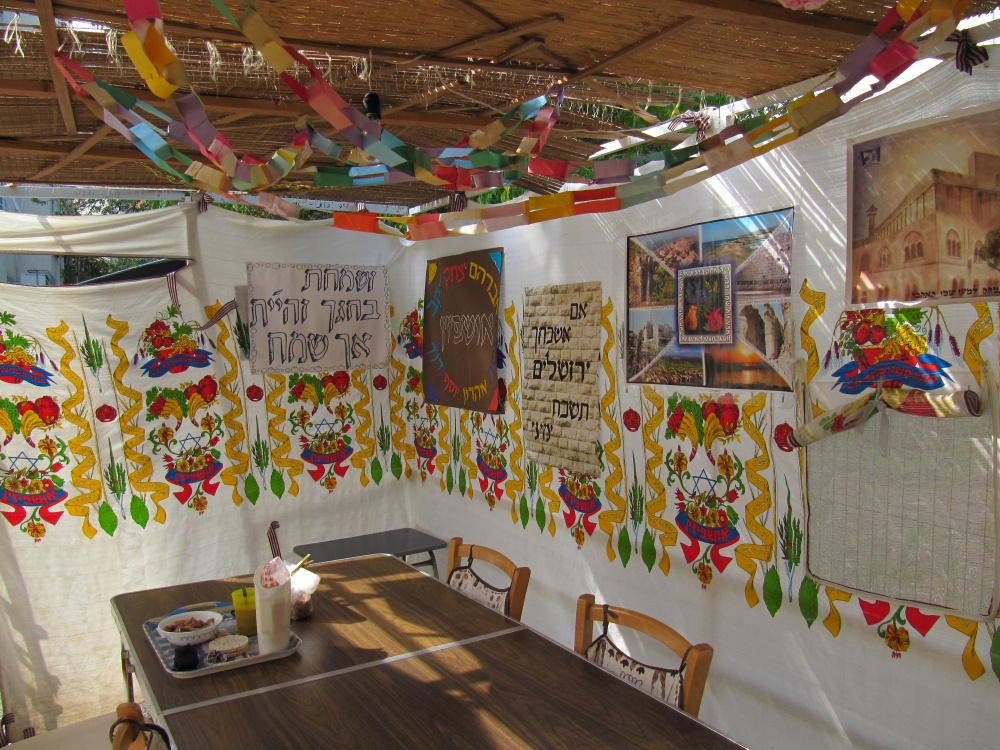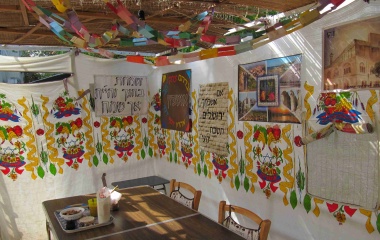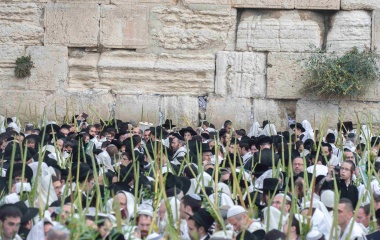
“Rav Yehuda said in the name of Shmuel: lulav, seven; and sukkah, one” (Sukkah 45b). So begins a discussion as to how often we are to make a bracha on these mitzvoth. Shmuel, the Gemara explains, is of the view that since there is one continuous mitzvah to sit in a sukkah for seven days and nights, “all seven are like one long day”; and hence, a bracha is recited only once. However, the mitzvah of lulav is applicable only by day, and not at night; and thus, each new day requires a new bracha.
Rav Yochanan takes the exact opposite view, requiring a bracha on the sukkah to be made on each of the seven days, but a bracha on the lulav to be made on the first day only. Sukkah, being a biblical mitzvah, warrants a daily bracha; whereas after the first day, lulav is only rabbinic in nature and hence, Rav Yochanan argues, no bracha is recited. As a bracha blesses G-d who commanded us in mitzvoth, one cannot say such when fulfilling the command of the rabbis.
Both these views are rejected, and we make a bracha on both the lulav and the sukkah for seven days[1]. Even if a mitzvah is of a continuous nature, it warrants a daily bracha, as we do, for example, regarding birchat haTorah. Despite the fact that the mitzvah of Torah study is neverending and applicable both by day and night, we recite the bracha on a daily basis. The Gemara even records the view of Rebbe—one codified by both the Rambam and the Shulchan Aruch—that one who wears tefillin all day[2] would make a bracha each time he returned from the bathroom. Thus, not only do we make a bracha every day on the sukkah, we generally make them several times a day—each time we eat a meal there.
“And where were we commanded?” the Gemara (46a) asks regarding the ruling that we make brachot on the lighting of the Chanukah menorah—the epitome of a rabbinic mitzvah. To this, the Gemara gives two answers. The first is, “Lo tasur, do not veer from all that they say to you”. While Chanukah—and lulav after the first day—may only be rabbinic mitzvoth, it is a Torah obligation to listen to the Sages[3]--and by following their rulings, we are carrying out the will of G-d, perhaps even more than by following the Biblical mitzvoth themselves[4].
The Gemara has a second possibility, one rooted not in a negative command but a positive one. “Ask your father and he will tell you, your elders and they will say to you”. Not only do the Sages have the right and obligation to interpret the Torah, they have the right and obligation to add new holidays and new decrees as they apply Torah to the world around them—ask them and they will tell you.
Making brachot is central to the life of an observant Jew. It is our way of acknowledging our gratitude and relationship with G-d. Our Sages compared one who benefits from this world without first expressing thanks through a bracha to a thief (Brachot 35a). And before fulfilling a mitzvah, one should pause, reflect, and thank G-d for allowing us and giving us the opportunity to do mitzvoth[5]. And each mitzvah needs and deserves its own bracha. We thus reject the view that, “If one has before him many mitzvoth, he says ‘baruch asher kid’shanu v’tzivanu al hamitzvot[6]” (Sukkah 46a). Rather, “blessed is G-d yom yom, every day”; we must give each day and each item its appropriate blessing. How blessed are those who can see blessings each and every day.
[1] This third view is quoted by Ravin in the name of Rav Yochanan, while the previous view is Raba bar bar Chanah in the name of Rav Yochanan. Such is to be expected in a tradition based on oral transmission.
[2] A practice which in theory is ideal but which is greatly frowned upon today, as it would (most likely falsely) assert that one is able to maintain the spiritual purity necessary for tefillin throughout the day.
[3] The debate as to whether the prohibition only applies when there is a Sanhedrin need not interest us here. These brachot were instituted by a Sanhedrin (or equivalent), and Torah can only remain relevant if the Sages of every generation help develop the Torah—and the people accept their teachings. No society can rely on those long dead to be the source of actual practice.
[4] This is how the Gemara (Avodah Zara 35a) interprets the verse in Shir HaShirim (1:2), “Your love is greater is greater than wine”.
[5] While such is true in the cases of mitzvoth between man and G-d and also mitzvoth between man and man, we only say brachot in performing the former. When it is time to help our fellow man, we dare not reflect on our relationship with G-d. He can wait as we attend to the needs of our fellow.
[6] Interestingly, Rashi gives the example of one who has to take a lulav, sit in a sukkah, put on tefillin, and wrap himself in a tallit. It is clear Rashi wore tefillin on Chol Hamoed. This was the accepted practice and the view recorded in the Shulchan Aruch. Ironically, the widespread practice today not to wear tefillin on Chol Hamoed (universally accepted in Israel) is based on the influence of both the Chasidic movement and the Vilna Gaon.



